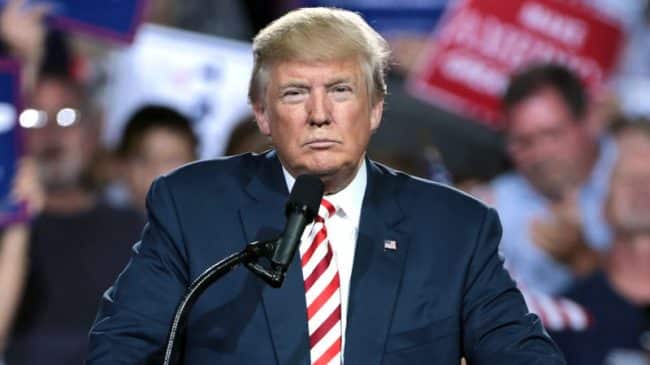President Trump recently issued an executive order (“Comprehensive Plan for Reorganizing the Executive Branch”) that, following in a tradition of sorts for recent presidents, sets forth a process aimed at reorganizing the federal government.
The Clinton administration had its National Performance Review, President George W. Bush’s eight years in office featured the President’s Management Agenda and Government Reorganization and Program Performance Improvement Act, and more recently, the Obama administration advocated its Reforming and Consolidating Government Act and Campaign to Cut Government Waste.
In this case, the Trump executive order directs Office of Management and Budget (OMB) Director Mick Mulvaney to “propose a plan to reorganize governmental functions and eliminate unnecessary agencies, components of agencies, and agency programs.” The intention is to take a comprehensive approach to evaluating the effectiveness of agency programs and functions, while also considering whether the most appropriate entities—either federal agencies, state and local governments, or the private sector—are handling those functions.
The order starts with giving federal agency heads 180 days to craft reorganization plans to improve their agency’s effectiveness and accountability, which Mulvaney will then use as input to guide the development of a comprehensive federal reorganization plan (due to the president 180 days after the close of the public comment period required in the order).
With regard to evaluating whether private entities might be able to take on certain commercial functions the government is currently performing, the Federal Activities Inventory Reform (FAIR) Act of 1998 already requires agency heads to label their respective agency’s functions as “governmental” or “commercial,” but the executive order implicitly gives Mulvaney the ability to either validate those designations—or override them and make alternative ones—for the purposes of developing OMB’s plan. In theory, this allows for a more robust consideration of what potential competitive sourcing opportunities may exist.
While the FAIR Act inventories provide a fair amount of useful information (such as descriptions of functions and the number of full–time equivalent employees performing each function), the inventories mostly lack clear explanations of why agency heads label functions “inherently governmental,” which suggests a function can only be done by the federal government and/or a federal employee.
And for functions labeled “commercial,” one of six “reason codes” provides further—though not always helpful—explanation about the appropriateness of private sector participation in performing the function. For example, it is not exactly clear how one of those codes, “not appropriate for private sector performance,” differs materially from “inherently governmental,” and many agencies’ latest FAIR Act submissions reveal agency heads labeling functions as “inherently governmental” or “not appropriate for private sector performance” frequently. In fact, 84 percent of the General Services Administration’s functions received one of these labels in 2015, as did 77 percent of the Justice Department’s, 87 percent of the Department of Energy’s and 81 percent of the Environmental Protection Agency’s.
That said, another reason code, “suitable for competition,” highlights functions that are likely suitable for competitive bidding from the private sector and could produce cost-savings and efficiency-gains. Some agencies designate fairly significant numbers of their functions as “suitable for competition.” The Department of Education labeled 56 percent of its functions as suitable for competition in 2015. Similarly, the Department of Health and Human Services labeled 30 percent of its functions “suitable,” while the Departments of General Services and Justice each labeled over 20 percent of their functions as suitable for competitive sourcing, according to the most recent FAIR act inventories of those agencies.
Federal agency heads can face understandable pressures to label their agency’s functions as “inherently governmental” in order to avoid having their budgets cut, laying off employees and creating discord within their departments. The Trump executive order seeks to overcome this by giving Mulvaney the ability to override these internal decisions and make alternative designations if appropriate. Critics might suggest the OMB director lacks the specialized subject matter expertise to make in-depth, function-level determinations about nuanced transportation or education issues, particularly compared to the agency heads and managers in those departments day-to-day, which would be a fair point.
But there is an equally valid counterargument that that there could be value in having a second review and outside opinion on such matters. Any competing perspectives between Mulvaney and the agency directors should be fully transparent—on the public record—so policymakers and the public can evaluate the recommendations for themselves.
Overall, time will tell if the forthcoming reorganization plan will yield much in the way of substantive reform proposals or meaningful policy change. Implementation of specific recommendations and competitive sourcing proposals will often require congressional action as well. Hence, the barriers to implementation are many. The new executive order is the latest attempt to take on the elusive goal of reorganizing the federal government. At a minimum, efforts to identify what the federal government should, and should not, be doing are useful. If the executive order leads to more competitive sourcing it could ultimately yield important benefits to taxpayers, from cost savings to more effective service delivery.
Austill Stuart is a policy analyst at Reason Foundation. Leonard Gilroy is director of government reform at Reason Foundation.

